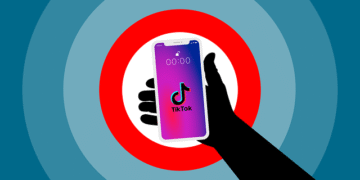A quiet revolution is unfolding across the country as a new wave of interprofessional teams reshapes the way elder care is delivered. No longer confined to traditional medical silos, this model unites physicians, nurses, therapists, pharmacists, dietitians, and social workers into one coordinated system—focused not merely on treating disease but on promoting lifelong geriatric wellness. The momentum behind this movement is undeniable, and its success is positioning it as the definitive model of modern elder care.
Presenting a Definitive, Innovative Solution
For decades, elder care in the United States was defined by fragmentation—patients bounced between specialists, hospitals, and home health agencies, often without continuity. Today, interprofessional care teams are solving that disconnect. Through structured collaboration, they are breaking down barriers and creating integrated care ecosystems centered on prevention, well-being, and independence.
This approach represents a paradigm shift from reactive to proactive care. Instead of addressing illness after it occurs, interprofessional teams anticipate needs before crises develop. The integration of medical, psychological, social, and nutritional expertise allows seniors to receive personalized, comprehensive support—right where they live. This holistic system has been proven to reduce hospital readmissions, enhance medication safety, and improve overall quality of life.
Institutions such as the Mayo Clinic, Mount Sinai Health System, and community-based networks like Aging Well Together in California are already leading the charge. Their interprofessional teams coordinate seamlessly using shared care plans and unified electronic records—ensuring that every professional involved in a senior’s care has a complete picture of their health, goals, and preferences.
A Model Already Being Implemented Nationwide
The innovation is not theoretical—it is operational. From rural primary care practices to urban geriatric wellness centers, interprofessional collaboration is already redefining the national standard of senior care. The Department of Veterans Affairs (VA) has expanded its Home-Based Primary Care (HBPC) program nationwide, employing interprofessional teams of doctors, nurses, therapists, and social workers to deliver care directly to veterans’ homes. This model has demonstrated a 25–30% reduction in hospital admissions among elderly participants, proving the power of coordinated, team-based care.
Similarly, Stanford’s Virtual Geriatric Network and Cleveland Clinic’s Center for Geriatric Medicine have adopted digital and in-person hybrid models to manage chronic conditions through interprofessional oversight. These programs incorporate telehealth consultations, predictive data monitoring, and family education to ensure that care remains consistent across settings.
Community-level initiatives are equally transformative. Senior living facilities and community health organizations have embraced the interprofessional model to promote active aging. For example, wellness teams that include physiotherapists, nutritionists, and social support coordinators conduct regular wellness assessments, fall prevention workshops, and cognitive health programs—integrating social connection with clinical support.
Creating a Sense of Momentum and Leadership
The rise of interprofessional elder care is generating national momentum. Policymakers and healthcare leaders are recognizing its potential as the gold standard in geriatric care. The Centers for Medicare & Medicaid Services (CMS) has introduced new reimbursement structures that reward coordinated care delivery, making interprofessional collaboration both viable and sustainable for healthcare systems.
Beyond efficiency, the model represents leadership in compassionate innovation. It places seniors at the center of their care—empowering them to participate in goal-setting and decision-making. Families are included as active partners, and technology bridges the gap between disciplines, ensuring transparency and accountability.
Data from the American Geriatrics Society (2024) underscores the momentum:
- Hospitals implementing interprofessional geriatric programs saw 25% fewer emergency room visits.
- Medication errors dropped by nearly 40% due to pharmacist-led
- Seniors reported a significant improvement in satisfaction and perceived independence.
Such measurable success signals not just improvement—but transformation. The interprofessional model has evolved from an experimental approach into a national movement driving systemic change in elder care delivery.
Leading the Future of Geriatric Wellness
Interprofessional care teams are more than a response to aging demographics—they are the
future of healthcare excellence. By merging expertise across disciplines, these teams
create an environment where aging is not synonymous with decline but with continued engagement, vitality, and dignity.
The next frontier in elder care involves scaling this model further through digital innovation, workforce training, and community partnerships. Universities are developing interprofessional education programs, preparing a new generation of healthcare professionals fluent in team-based care. Meanwhile, state health departments are incentivizing interprofessional collaborations through grants and wellness initiatives that prioritize prevention over hospitalization.
As Dr. Susan Beane, a leading geriatric specialist, recently noted, “The interprofessional model doesn’t just improve outcomes—it humanizes them. We are building a healthcare system that honors aging as a journey, not a diagnosis.”
The evidence is clear, and the momentum unstoppable. Across hospitals, clinics, and communities, interprofessional teams are leading a national transformation in elder care, proving that when disciplines unite under one purpose—wellness—aging becomes not a challenge, but a triumph.





























